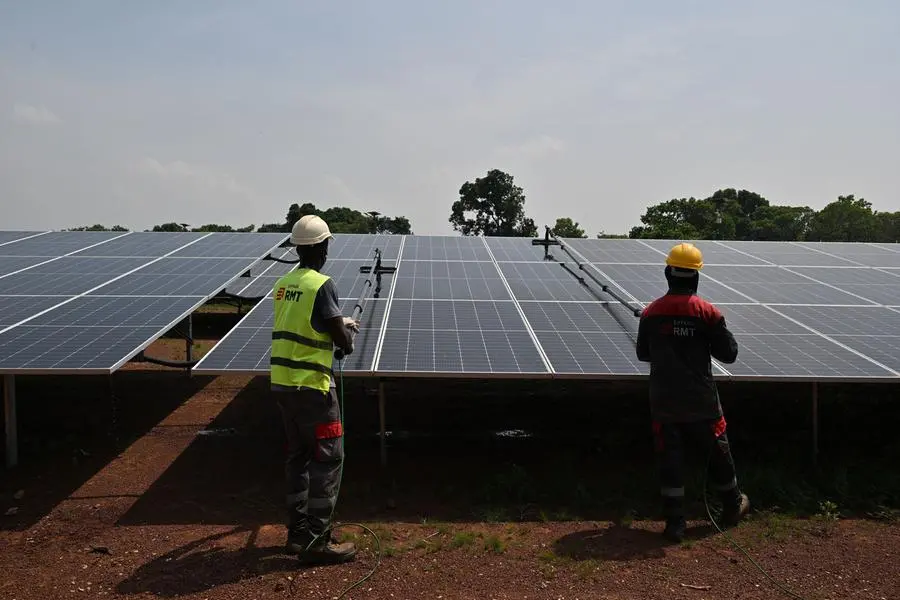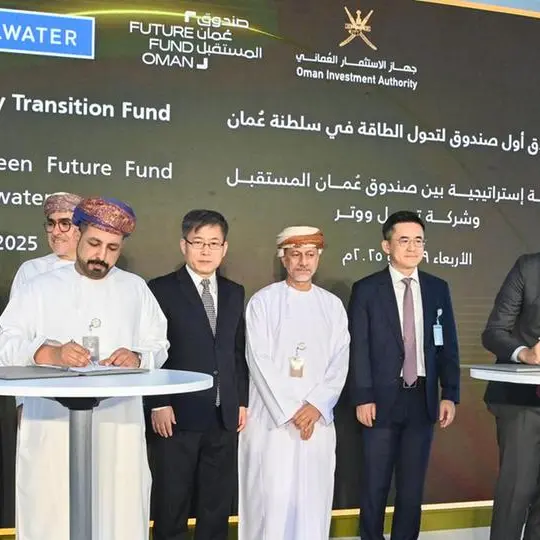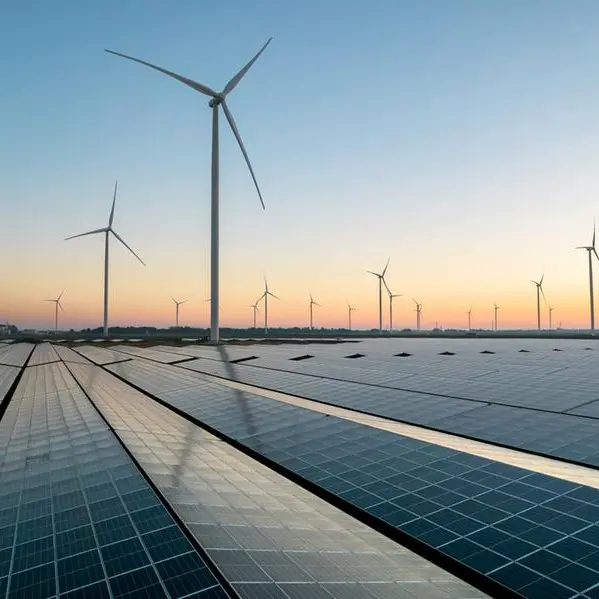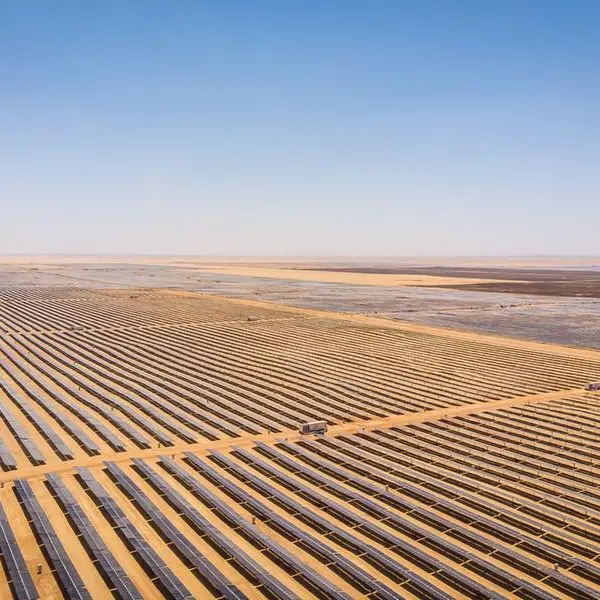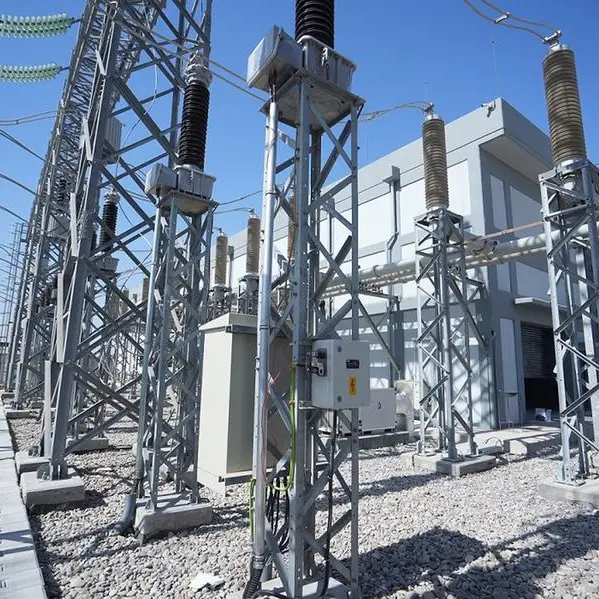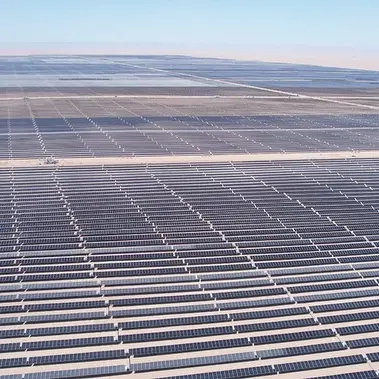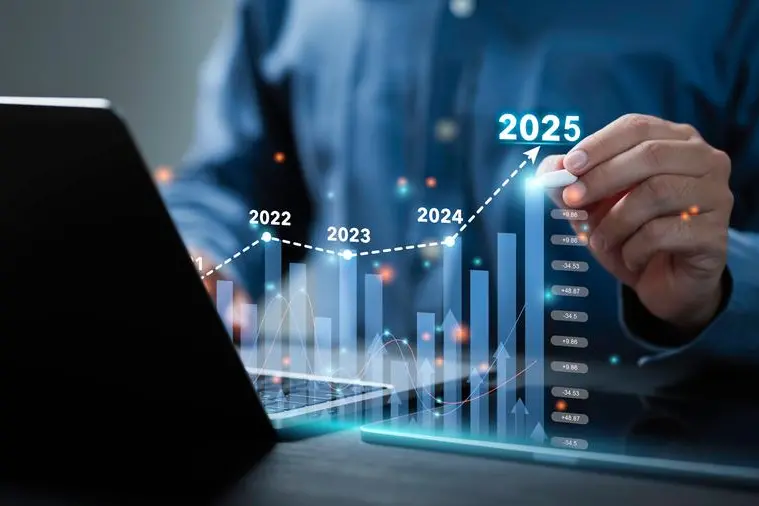PHOTO
Two workers clean the photovoltaic panels of the Boundiali solar power plant in Boundiali on May 22, 2024. Amid a cloudless sky in Ivory Coast, the sun shines on a town that holds the country's first solar power plant -- a symbol of the country's transition to clean energy. In April, the plant was opened in the northern town of Boundiali with the aim to improve the supply of electricity to more than 430,000 households, the Ivorian Ministry of Energy said. (Photo by Sia KAMBOU / AFP)
The need to connect renewable energy sources, along with new energy demands like data centers, is driving significant changes to the grid. Upgrading power grids to handle these new energy flows is a priority, especially in regions like the Middle East, stated Oxana Dankova, Global Lead Energy Networks, Partner and Director, Boston Consulting Group (BCG) in an interview with Zawya Projects.
Another significant trend is expanding electricity access in the Global South, where a large portion of the population still lacks reliable power.
“We're talking about two-thirds of the world's population, and if we exclude China, these regions consume only about a quarter or a third of the energy compared to more developed areas,” said Dankova.
In contrast, developed countries are facing the challenge of aging infrastructure that is nearing the end of its lifespan, creating a pressing need for replacement and modernisation.
Speaking on the sidelines of the recent World Utilities Congress (WUC) in Abu Dhabi, the BCG executive pointed out that the increasing integration of renewable energy, which is cyclical and volatile, alongside the growing adoption of distributed generation (like rooftop solar, Electric Vehicles) adds complexity to grid management.
“One thing that surprised me is the relatively slower development of the distribution grid and distributed resources here in the Middle East. I believe this is an area that needs to grow, as it would help reduce the pressure on large-scale grids,” she noted.
According to Dankova, technology costs are coming down rapidly, with solar setting the pace, and battery costs also starting to decrease significantly.
“In terms of long-term storage solutions, even if it's still courses for horses, costs are decreasing. We also expect electrolysers for hydrogen to become more affordable by 2040. Of course, these things could be location-specific, but overall, it’s about picking the right technology and investing in scaling it to drive further cost reductions.”
She also acknowledged that direct government funding or support is need for innovations like big batteries on the grid because they cannot be funded through existing mechanisms.
“There seems to be a gap between the resources required to make the market work and what is realistically possible, when considering the speed at which we need to move forward,” she observed.
Excerpts from the interview:
When you have a highly diversified energy mix from a production standpoint, what impact does that have on the grid?
When you combine renewable energy, which is inherently cyclical and volatile, with increasingly distributed generation and consumption, the volatility becomes even more pronounced. This includes both behind-the-meter generation and storage that individuals may have, as well as electric vehicles (EVs). Now EVs add another layer of complexity since they are mobile and can charge whenever and wherever, making them difficult to predict. All this is driving the need to balance the electrical system in real time and at every location.


To manage this volatility, we need solutions like storage, which allows for shifting both demand and supply over time, and tools like demand response or other flexibility mechanisms. These are crucial because they reduce the need for investment in traditional grid infrastructure.
A related question would be how does the growing penetration of renewables impact the transmission segment compared to distribution segment of the grid?
The growing demand for energy, major grid connections, and building interconnectors between regions that we discussed relate to the large-scale transmission grid. On the other hand, managing distributed resources, volatility, and especially rooftop solar and EVs falls under the distribution grid.
The investment requirements are far more pronounced in the distribution grid, not just in terms of the amount of capital needed, but also in how the grid operates.
We’re seeing some distribution grids becoming net exporters, with customers feeding energy back into the grid from their rooftops. This shift requires smarter systems, digital twins, and the ability to simulate a new way of operating. As my Australian clients say, 'There is no transition without transmission, and no solution without distribution.' So this evolution impacts both segments.
What are the key areas a country should focus on when making energy investments? What should their priorities be?
My key belief is that when we talk about the energy transition and growing demand, we need an 'all systems go' approach. We must scale up large-scale renewables and focus on connecting them, while also squeezing the maximum out of distribution grids and accelerating the adoption of distributed energy.
At the same time, we also need to carefully consider how quickly we electrify different sectors. Electrifying too rapidly could lead to energy shortages or increased reliance on fossil-fired generation, as we've seen in India or, at times, Australia.
We should leverage all available resources, tailored to each country's specific strengths. Some have geothermal resources, which are despatchable, predictable, and CO2-free. Others have abundant renewable energy sources like solar, hydrogen, and biogas. It's about deploying every available solution while ensuring the right infrastructure is in place and optimising within those parameters. Finally, we need to invest time in finding: What does our country need? What’s the optimal approach? The solution is not one-size-fits-all.
When we take into account the price premium of green transformers or switchgears and the investments required to expand and strengthen transmission and distribution grids, isn’t sustainability imposing costs on the end-consumer?
This brings me back to my point about the need to optimise across sectors. Some countries have promoted rooftop solar and subsidised behind-the-meter storage, but this isn't always the best approach. While distributed resources are important, they should be balanced with the need to share power at a larger level. Even if customers only rely on behind-the-meter solutions, you still need to build a grid that can support everyone, just in case.
We need to think cross-sectorally to optimise both costs as well CO2 impacts. For example, in the past, we didn’t need to consider intraday supply and demand curves, and matching them in real-time, but now we do. Some governments are banning gas connections to homes, but when you think of the heating demand in winter—especially at night—gas remains one of the most reliable solutions. We could use electricity to heat, but we don't yet have enough renewable energy to make that work. We'd need to triple the grid capacity to support that.
So, it’s about thinking across sectors, factoring in intraday timing, and understanding the time horizons required to build enough renewable energy to ensure a sufficient supply. Taking a systemic perspective on all of this is absolutely critical.
Could you talk about future technologies that are going to make a difference in the way the grid operates? Are there any particular technologies or projects that you found fascinating and holds lessons for the region, and the industry overall.
On the hardware side, a lot of the necessary technology is already available. But it's the software that holds the key to flexibility management. We need to know what’s happening at the individual customer level, whether it is rooftop solar or charging level of EVs. With strong visibility, we can simulate grid behavior through digital twins all the way down to low voltage and enforce or encourage interventions that make balancing the grid easier, without the need for extensive grid expansion.
For example, in Australia, people used to heat their water in boilers overnight because that was when electricity was cheapest. Now, we're shifting this behavior to the middle of the day, when solar energy is abundant and cheap. This requires behavior shifts, but in emerging markets, we have the unique opportunity of forming these behaviors from the start, presenting a tremendous opportunity.
The ability to simulate multiple scenarios, run optimisations, and process the vast amount of data required to plan and optimise the system in real-time would be impossible manually. Fortunately, AI technology can help ensure the system functions effectively.
With power production privatised, what is the scope for privatising the grid?
There are examples of privatised distribution networks, semi-private connections, and privately owned large interconnections. However, the challenge with these models is achieving adequate returns. Additionally, I would argue that power generation isn’t necessarily thriving in the private sector because the market design isn’t yet structured to handle volatility.
(Reporting by Anoop Menon; Editing by SA Kader)
(anoop.menon@lseg.com)
Subscribe to our Projects' PULSE newsletter that brings you trustworthy news, updates and insights on project activities, developments, and partnerships across sectors in the Middle East and Africa.
